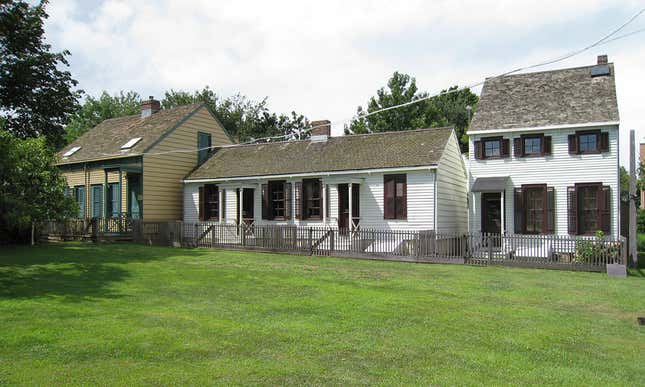
A report just last year found that when it comes to teaching about slavery—the very economic and social foundation on which this nation was built—the U.S. does a piss poor job.
As the Southern Poverty Law Center found: “Students lack a basic knowledge of the important role [slavery] played in shaping the United States and the impact it continues to have on race relations in America.”
That’s especially true when it comes to the realities of slavery in the North, in places like New York City. Today, the Big Apple is known as a great bastion of liberal politics and the home to practically every race and ethnicity.
But for some 200 years, beginning in the 1620s in colonial New York, slavery existed in New York, ending in 1827, less than 40 years before the start of the Civil War and the eventual end to slavery throughout the U.S.
Unlike many cities in the South, the vestiges of slavery and what happened to black people who had been enslaved are often hard to find in New York. That’s why places like historic Weeksville in New York’s Brooklyn are so important—and so in danger of disappearing forever.
Weeksville was a free black community founded in 1838 by James Weeks, a black longshoreman from Virginia, who bought the land the community was built on and sold plots to other black folks, both those born free and those who had been enslaved.
Gentrification and urban renewal led to the demise of the community. However, the few remaining homes that exist, known as the Hunterfly Road Homes, give visitors a view of what life was like for black folks in New York following emancipation.
They were declared landmarks in the 1970s, but today, the Weeksville Heritage Center, which maintains the homes and continues to tell the story of the people who lived in them, is in dire need of money to keep its doors open.
The center successfully raised more than $246,000 in a crowdfunding effort, according to Patch. But while those donations will help close a current budget gap, ongoing funding is still needed.
“It was community that came together [...] to save our Historic Hunterfly Road Houses from [demolition] and fought to have them declared New York City landmarks,” Rob Fields, president and executive director of the center, tells The Root. “And, it has been support from all corners of our community that has lifted us up in this time of true need.”
“The hard work before us will be to put in place an operating and funding model that ensures not only that Weeksville will never be in this position again,” Fields continues, “but that we also make good on the faith that so many have placed in us.”
Award-winning actor and Brooklynite Michael K. Williams, perhaps best known known for his role as Omar on HBO’s The Wire, has become a kind of ambassador for Weeksville and the rich, if little known, African American history told by its presence.
“I was humbled by all the greatness I saw,” Williams told the New York Times of a community that birthed black business owners, educators and doctors, including New York’s first black woman physician, Susan Smith McKinney-Steward.
“When I went into the homes, I saw how much they did with so little,” Williams said. “Sometimes I complain about how much square footage I need, and I’m looking at how my ancestors put it down with the bare minimum, and created a foundation for me to get where I am today.”
The Weeksville Heritage Center’s CrowdRise fundraising is ongoing and the page can be found here.
It is wonderful to see how much the community has stood up to keep Weeksville alive.
In addition, hopefully, funding can be obtained by major corporate donors as well, especially New York’s banking and insurance companies, both sectors that greatly benefited from the slave trade, both down South and up North, in the Big Apple.
Updated: New comments from Weeksville Heritage Center President and Executive Director Rob Fields are included above throughout.

